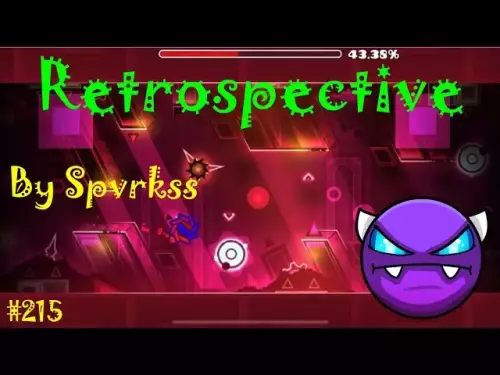-
 bitcoin
bitcoin $108183.343957 USD
1.12% -
 ethereum
ethereum $3953.318181 USD
2.13% -
 tether
tether $1.000758 USD
0.05% -
 bnb
bnb $1102.411872 USD
1.73% -
 xrp
xrp $2.377410 USD
1.30% -
 solana
solana $185.715867 USD
0.05% -
 usd-coin
usd-coin $1.000561 USD
0.08% -
 tron
tron $0.320859 USD
2.39% -
 dogecoin
dogecoin $0.194561 USD
3.07% -
 cardano
cardano $0.647327 USD
2.68% -
 hyperliquid
hyperliquid $37.310392 USD
1.96% -
 ethena-usde
ethena-usde $0.999792 USD
0.04% -
 chainlink
chainlink $17.181017 USD
2.56% -
 stellar
stellar $0.316938 USD
1.13% -
 bitcoin-cash
bitcoin-cash $472.186880 USD
1.35%
What is the best way to learn the VWAP indicator from scratch?
VWAP combines price and volume to reveal intraday trends, serving as a dynamic benchmark for trade execution and trend confirmation in liquid markets.
Oct 18, 2025 at 02:18 pm

Learning the VWAP (Volume Weighted Average Price) indicator from scratch requires a structured approach that blends theoretical understanding with practical application in real market environments.
Understanding the Basics of VWAP
1. Begin by grasping the mathematical foundation of VWAP. It is calculated by multiplying the price of each transaction by its corresponding volume, summing these values over a specific period, and then dividing by the total volume for that same timeframe. This creates a dynamic average that reflects both price and trading activity.
- Recognize that VWAP is intraday in nature, typically reset at the start of each trading session. Unlike moving averages, it doesn’t rely on arbitrary lookback periods but instead recalibrates daily based on actual traded volume.
- Study how institutional traders use VWAP as a benchmark for execution quality. When orders are filled below VWAP in a buy scenario (or above in a sell), it's considered favorable execution.
- Learn to interpret the relationship between price and the VWAP line: when price trades above VWAP, the trend is generally bullish; below indicates bearish sentiment.
- Understand that VWAP is not predictive but descriptive—it shows what has already occurred, making it more useful for confirming trends than forecasting them.
Integrating VWAP into Technical Analysis
1. Combine VWAP with other indicators like moving averages or RSI to enhance signal accuracy. For example, a price crossing above VWAP with increasing volume and RSI exiting oversold territory may suggest a valid long opportunity.
- Observe how price reactions at VWAP can act as support or resistance. In strong trends, price often retests VWAP before continuing in the direction of momentum.
- Use VWAP in conjunction with order flow analysis. A surge in volume as price approaches VWAP can indicate accumulation or distribution depending on the direction.
- Apply VWAP across different timeframes within the same trading session. While primarily used on 1-minute or 5-minute charts, comparing its slope across intervals can reveal shifts in momentum.
- Monitor deviations from VWAP. Large gaps between current price and VWAP may signal overextension, especially if not supported by sustained volume.
Practical Application in the Crypto Market
1. Apply VWAP on crypto futures or spot markets with high liquidity, such as Bitcoin or Ethereum on major exchanges. Low-volume altcoins may generate misleading signals due to thin order books.
- Backtest VWAP-based strategies using historical tick data. For instance, evaluate how often price reversals occur after touching VWAP in ranging markets.
- Simulate live trading with VWAP as a decision filter. Set rules like “only enter long positions when price is above VWAP and volume exceeds the 20-period average.”
- Watch for VWAP divergence during news events or macroeconomic announcements. Sudden spikes in volume can distort the average, leading to false breakouts.
- Use VWAP alongside time-weighted price levels to identify imbalances—areas where large volumes were traded, which may influence future price action.
Common Misconceptions About VWAP
1. Many assume VWAP is a standalone trading system. In reality, it performs best when integrated into a broader strategy that includes volume profile, market structure, and risk management.
- Traders often misinterpret VWAP crossovers as immediate entry signals. However, without confirmation from volume or momentum, these crossovers can result in whipsaws.
- Some believe VWAP works equally well across all assets. Its effectiveness diminishes in illiquid or highly volatile markets where volume data is unreliable.
- There’s a tendency to apply VWAP beyond its intended scope—using it on daily or weekly charts defeats its purpose since it’s designed for intraday precision.
- A critical error is treating VWAP as a static level. It continuously updates with new trades, so its value at 10:00 AM will differ from 10:05 AM even on the same chart.
Frequently Asked Questions
How is VWAP different from a simple moving average?VWAP incorporates volume into its calculation, giving more weight to prices where higher trading activity occurred. A simple moving average treats all price points equally regardless of volume, making VWAP more reflective of true market consensus.
Can VWAP be used in overnight or extended trading sessions?While technically possible, VWAP loses relevance outside regular trading hours because volume drops significantly. Most platforms reset VWAP at the beginning of the new trading day, aligning it with institutional trading cycles.
Is VWAP suitable for scalping strategies in cryptocurrency?Yes, particularly in liquid pairs. Scalpers use VWAP to determine directional bias and optimal entry zones. A common tactic involves fading moves that extend too far from VWAP without volume support.
Why does VWAP sometimes appear flat on my chart?This usually happens during low-volume periods when few trades occur. Without sufficient transactions, the average doesn't update meaningfully, causing the line to stagnate until activity resumes.
Disclaimer:info@kdj.com
The information provided is not trading advice. kdj.com does not assume any responsibility for any investments made based on the information provided in this article. Cryptocurrencies are highly volatile and it is highly recommended that you invest with caution after thorough research!
If you believe that the content used on this website infringes your copyright, please contact us immediately (info@kdj.com) and we will delete it promptly.
- CZ's Meme Coin Scam Alert: Verified Accounts Under Fire
- 2025-10-21 00:45:17
- ROHAN 2: Global Hit Reaches 55,000 Simultaneous Players!
- 2025-10-21 00:45:17
- Week in Review, News, October 2023: Neo's Evolution, Global Crypto Trends, and More
- 2025-10-21 00:25:16
- NEOBOX Monthly Update: Pixudi's Arcade Platform Takes Shape
- 2025-10-21 00:25:16
- Polychain, Kraken, and Blockchain.com: Power Players Fueling Crypto's Next Chapter
- 2025-10-21 00:30:01
- Bitcoin: The New Safe Haven? Fraud Resistance and Institutional Embrace
- 2025-10-21 00:30:01
Related knowledge
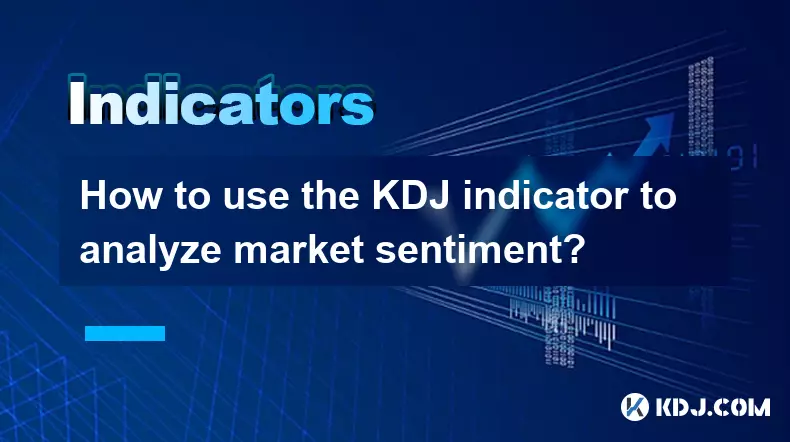
How to use the KDJ indicator to analyze market sentiment?
Oct 18,2025 at 07:18pm
Understanding the KDJ Indicator in Cryptocurrency Trading1. The KDJ indicator, also known as the Stochastic Oscillator, is a momentum-based technical ...
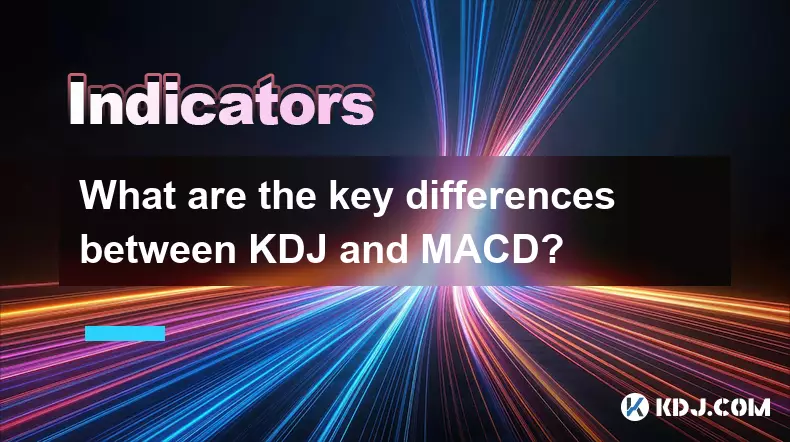
What are the key differences between KDJ and MACD?
Oct 18,2025 at 04:54am
KDJ Indicator: Core Mechanics and Usage1. The KDJ indicator is a momentum oscillator that combines the features of the Stochastic Oscillator with an a...
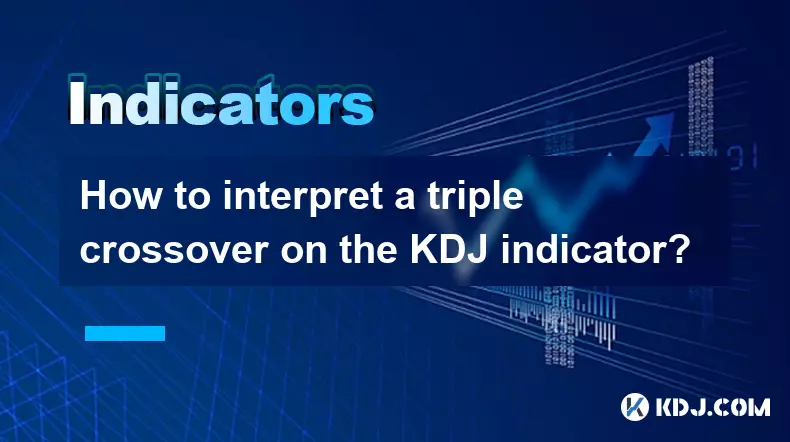
How to interpret a triple crossover on the KDJ indicator?
Oct 18,2025 at 01:54pm
Understanding the Triple Crossover in KDJ Indicator1. The KDJ indicator, a derivative of the Stochastic Oscillator, consists of three lines: K, D, and...

What's the best timeframe for the KDJ indicator?
Oct 20,2025 at 03:01pm
Understanding the KDJ Indicator in Crypto TradingThe KDJ indicator, an extension of the stochastic oscillator, is widely used in cryptocurrency tradin...
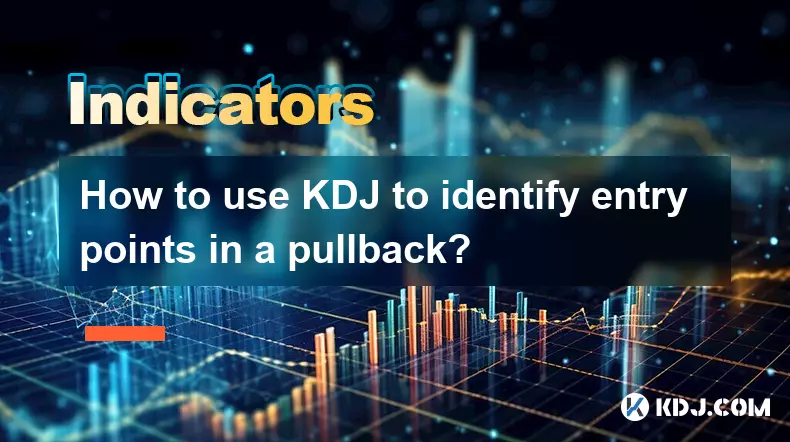
How to use KDJ to identify entry points in a pullback?
Oct 18,2025 at 09:36am
Understanding KDJ in the Context of Pullbacks1. The KDJ indicator, an extension of the stochastic oscillator, consists of three lines: %K, %D, and %J....
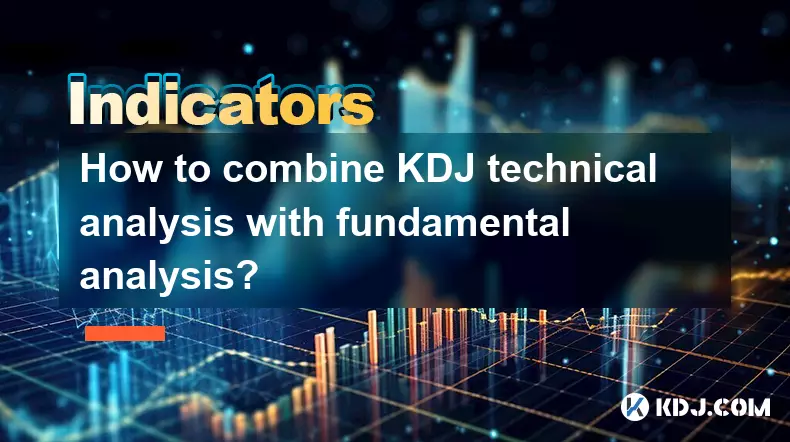
How to combine KDJ technical analysis with fundamental analysis?
Oct 20,2025 at 11:55pm
Understanding KDJ in the Context of Cryptocurrency Markets1. The KDJ indicator, originating from stochastic oscillator principles, is widely used in c...

How to use the KDJ indicator to analyze market sentiment?
Oct 18,2025 at 07:18pm
Understanding the KDJ Indicator in Cryptocurrency Trading1. The KDJ indicator, also known as the Stochastic Oscillator, is a momentum-based technical ...

What are the key differences between KDJ and MACD?
Oct 18,2025 at 04:54am
KDJ Indicator: Core Mechanics and Usage1. The KDJ indicator is a momentum oscillator that combines the features of the Stochastic Oscillator with an a...

How to interpret a triple crossover on the KDJ indicator?
Oct 18,2025 at 01:54pm
Understanding the Triple Crossover in KDJ Indicator1. The KDJ indicator, a derivative of the Stochastic Oscillator, consists of three lines: K, D, and...

What's the best timeframe for the KDJ indicator?
Oct 20,2025 at 03:01pm
Understanding the KDJ Indicator in Crypto TradingThe KDJ indicator, an extension of the stochastic oscillator, is widely used in cryptocurrency tradin...

How to use KDJ to identify entry points in a pullback?
Oct 18,2025 at 09:36am
Understanding KDJ in the Context of Pullbacks1. The KDJ indicator, an extension of the stochastic oscillator, consists of three lines: %K, %D, and %J....

How to combine KDJ technical analysis with fundamental analysis?
Oct 20,2025 at 11:55pm
Understanding KDJ in the Context of Cryptocurrency Markets1. The KDJ indicator, originating from stochastic oscillator principles, is widely used in c...
See all articles























